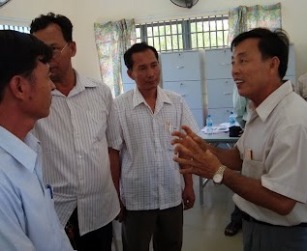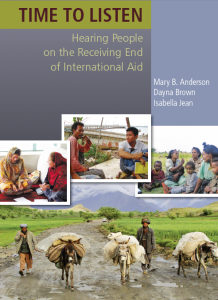 A very interesting interview with Michael Clemens, migration expert from the Centre for Global Development, a US think thank. What would happen if Europe (quite utopically) would decide to open up its borders? Some key extracts:
A very interesting interview with Michael Clemens, migration expert from the Centre for Global Development, a US think thank. What would happen if Europe (quite utopically) would decide to open up its borders? Some key extracts:
On why people migrate:
Safety and opportunity depend mostly on what country you live in, and 97 percent of humanity lives in the country they were born in. For those of us born in safe, prosperous countries, such a random lottery seems quite satisfactory. Most migrants are people who have simply decided that they will not let lottery results enforced by others determine the course of their lives.
On the impact of migration on the host country:
I would go as far as to say that this is a consensus opinion among economists. That is saying a lot, because economists are known for putting caveats on everything. But all the serious evidence we have points to large gains in overall economic activity from reduced barriers to labor mobility. Ninety-six percent of American labor economists agree that the economic benefits of US immigration exceed the losses.
Unfortunately, this research is rarely used as the basis for a debate. Instead, nasty arguments like ” if we allow them, many more will come”, tend to be accepted as truth. What I didn’t know, is that research shows that immigration increases wages for low-skilled labour, rather than depressing them:
Research has shown that natives acquire more skill when immigration rises [by specializing in occupations requiring more complex tasks and less manual labor]. And firms adjust their investments when immigrants are present, shifting away from technologies that eliminate low-skill jobs for both low-skill immigrants and low-skill natives. Most simply of all, foreign workers are not just workers, they are also consumers. Immigrants at low wages tend to consume products, like fast food and budget clothing, that are made and sold by other low-wage workers.
This relates to the work of Ricardo on comparative advantages in trade. Countries with a lot of labor relative to capital, for example, will tend to have a comparative advantage in labor intensive goods production. Apart from human rights and social justice arguments, letting in more migrants makes economic sense, in particular in greying Europe. Rather than fearing that immigrants will plunder social security coffers, the question is whether European welfare systems will collapse without immigrants:
A comprehensive review by the independent OECD in 2013 found that the average immigrant household in Europe contributed over £2,000 [$3,000] more in taxes than it took in benefits.
The most interesting argument in my eyes, is how often a mindset that considers migrants as people who somehow not belong where they are, is used in case of cultural tensions. The tensions are explained as a result of migration, rather than as a responsibility of the host country. The mindset becomes a self-fulfilling prophecy. Clemens clarifies the point with a good analogy:
Suppose a woman is attacked by men on the street, as she walks to work. What caused the attack? It depends on your assumptions. Many people in the world do not believe that women have the unqualified right to work or to walk down any street. These people might say that the cause of the attack was that the woman’s family allowed her to take a job and walk around unguarded. If you believe that women’s rights to work and travel are beyond question, you might identify a different cause of the attack: The cause of the attack was that men decided to attack her.
Likewise, when activists hold rallies to unmistakably threaten immigrants with violence, many might describe this as social conflict “arising” from immigration. This view requires you to already have decided that migrants don’t have the right to be there—for the same reasons that saying attacks against women arise from their presence on the sidewalk requires you to have already decided that women don’t have the right to walk on the sidewalk.
Finally, how about the effects on the origin countries? Brain drains leaving countries with few qualified doctors and engineers. Or, the important role of remittances, many times bigger than aid, on development? Clemens underlines that immigration is different from actively recruiting people in developing countries:
So if we’re talking about immigration policy, the question “Does migration substantially harm low-income countries?” is the same as the question, “Does forcibly stopping people from leaving low income countries substantially help those countries?” To put it mildly, social science has absolutely no evidence of such a effect.
People in developed countries often see the wealth and opportunities in their country as a right, rather than as a stroke of luck, as if they have any credit in being born in a rich country. Given the fact that countries such as Lebanon (4 million people) and Jordan (6,5 million people) each can take one million Syrian refugees, a good starting point for European countries would be to increase the numbers they’re willing to accept each year. Articles and arguments such as this deserve to be widely read.




